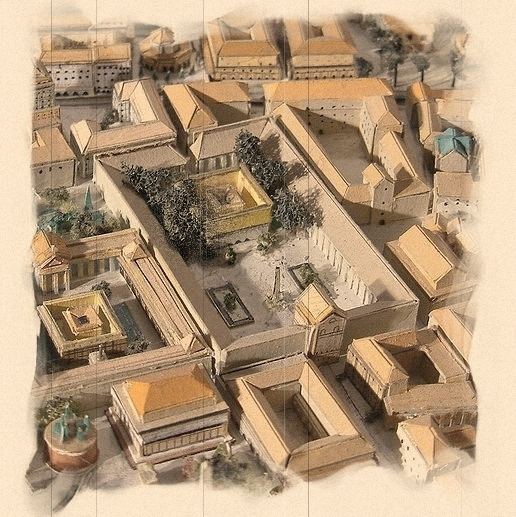 | ||
Incineracio d un guerrer ib ric a l ustrinum de can rodon cabrera de mar barcelona
In ancient Rome, an ustrinum (plural ustrina) was the site of a historical funeral pyre. The ancient Greek equivalent word was καύστρα (kaustra).
Contents
- Incineracio d un guerrer ib ric a l ustrinum de can rodon cabrera de mar barcelona
- Ustrinum Domus Augustae
- Ustrinum Antoninorum
- References
Ustrinum Domus Augustae

The site of the funeral pyre of the emperor Augustus, the ustrinum of the house of Augustus, was sited in the Campus Martius, near the Mausoleum of Augustus. Strabo describes it as a travertine enclosure with a metal grating (presumably on top of the wall) and black poplars planted inside it. A fine alabaster urn and six large rectangular cippi of travertine were found in excavations in 1777 at the corner of the Corso and Via degli Otto Cantonia (now Via dei Pontefici). These cippi had inscriptions of various members of the imperial household, the three sons and one daughter of Germanicus, Tiberius the son of Drusus, and a certain Vespasianus. It is very probable that these cippi, or at any rate the first three, which all end with the formula 'hic crematus est,' belonged to the ustrinum. This would place the ustrinum on the east side of the Mausoleum. On this hypothesis, the fourth and fifth cippi, which bear the formula hic situs (or sita) est, may have belonged to the mausoleum. Hirschfeld, however, excludes this possibility, mainly because of the material and form of the cippi.
Ustrinum Antoninorum

The remains of an ancient Roman structure were discovered in 1703 under the Casa della Missione, just northwest of the Piazza di Monte Citorio, with an orientation like that of the columns of Antoninus and Marcus Aurelius. It consisted of three square enclosures, one within another. The two inner enclosure walls were of travertine; the outer consisted of a travertine kerb, on which stood pillars of the same material with an iron grating between them. The innermost enclosure was 13 metres square, the second 23, and the outer 30 metres square. A free space, 3 metres wide, was left between the first and second walls and between the second and third. The entrance was on the south.
Architect and topographer Francesco Bianchini named it the "ustrinum of the Antonines" on the hypothesis that it was the site of the funeral pyre for members of that dynasty. This possibility has not been seriously challenged, though it may also have been attached to the column of Antoninus as a great altar for sacrifices at the deification of the emperors. Lanciani suggests that this may have been the "ustrinum Antonini Pii et Faustinae", while another similar structure, of which the ruins were found in 1907 just a little to the north-east of the first, was the "ustrinum M. Aurelii Antonini".
